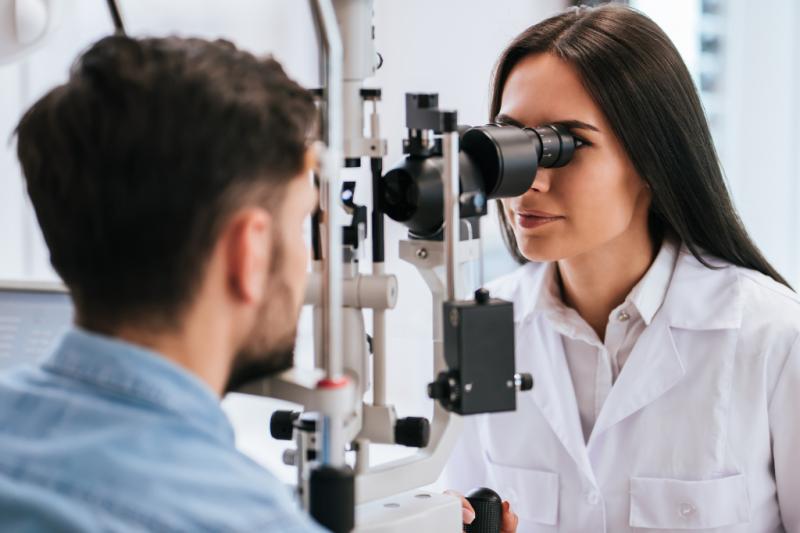How Eyewear Toronto Can Help With Your Vision Problems

Vision problems affect people of all ages and walks of life. Most of them can be caused by eye issues that have been present from birth, infections, environmental factors, or conditions that might end up flaring later in life.
Hence, consider getting a full eye exam every one to two years. However, if you are over 60, obese, or had an eye injury, infection, damage, or surgery, you may need a more frequent exam to check your eye condition.
If you suspect or experience any sight loss, the first step is to get your vision assessed by an optometrist. The eye doctor will perform an eye exam, diagnose any eye problems, and then find the appropriate treatment.
Yet vision problems aren’t easy to detect, and you may need to consult a professional such as the Optician on Wheels. The eye doctor will help with all your vision problems in the following ways:
1. You’ll Get An Eye Exam
When you visit an eye specialist, the first step to getting help with your vision problems is getting an eye exam. This eye exam will entail a provider asking about your general health and family history and evaluating your current health status.
In addition, the doctor will check how dilated your pupils are or how your eyes move and focus. Standard tests to expect include:
- Visual Acuity. This test entails reading letters on an eye chart from a distance while covering one eye at a time. Besides, you might have to look through a device containing several lenses that let the provider know whether you need glasses and the right lens prescription.
- Visual Field. Your doctor might also hold up a finger and then move it from side to side in an attempt to check your peripheral side vision. This test is aimed to enlighten your doctor about your full range of vision.
- Color Blindness Test. The test is aimed at checking your color vision strength with a series of images with colored dots containing colored numbers. So, if you fail to see the numbers, you might have a color deficiency.
- Corneal Topography. This test is done to create a plan of your cornea by looking at an object and having its measurements taken. Doctors use the results of the tests to fit contact lenses and, in worse-case scenarios, prepare for corneal transplants.
Additional tests might include examinations of the lens, retina, optic nerve, blood vessels, and parts of your eye under high magnification.

2. They’ll Look For Eye-Related Concerns
Aside from the tests that will give your doctor additional information about your visit, your doctor may also look for eye-related concerns. These include:
- Refractive Errors. An eye examination can diagnose this common eye disorder. If you get this diagnosis, you might get it treated with corrective glasses or contact lenses, or when in dire need, you might need to undergo refractive surgery.
Some common refractive errors are myopia, nearsightedness, and hyperopia (farsightedness). Other refractive errors include presbyopia, which leads to using your vision at an arm’s length, and astigmatism, which means distorted vision.
- Changes In Vision. This concern may include having low vision, a detached retina, macular degeneration, and in some cases, signs of cataracts.
- Issues With The Muscles Supporting The Eyes. These include eye problems like strabismus or crossed eyes and amblyopia, commonly known as the lazy eye.
- Most doctors also look for tumors or cancer in the eye, including intraocular melanoma and retinoblastoma.
3. They’ll Check For A Wide Range Of Conditions
Signs of different health conditions may lead to eye changes. So, your doctor might need to check for all the possible range of conditions, disorders, and diseases even though they might not be related to the eyes.
These conditions might include diabetes, which in some instances might lead to diabetes-related retinotopy, high blood pressure, and high cholesterol or arterial diseases. You might also get checked for autoimmune disorders, including lupus and multiple sclerosis.
Bottom Line
One sense of sight is responsible for how we see things and move through the day. Therefore, you need to take care of your eyes to reduce the odds of eye problems and vision loss. You may start by eating a healthy balanced diet and getting regular exercise. Should you feel any visual problems, a quick visit to eyewear Toronto can explain your exam results and guide you toward proper treatment. You may also expect follow-up checkups to help with your vision problems to ensure the best results. In severe cases, you will be referred to ophthalmologists to help determine and treat your eye problem.
More to Read:
Previous Posts:








